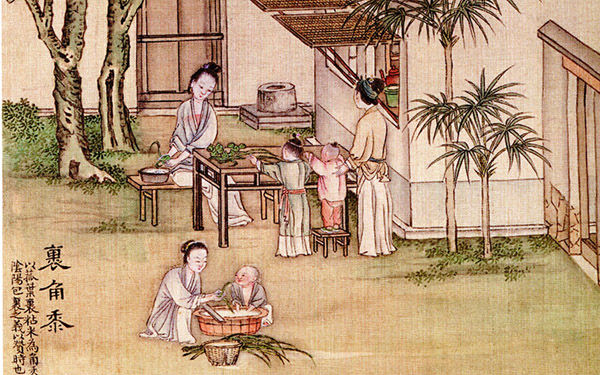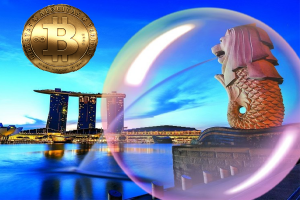By Vibrant Dot Staff
The Dragon Boat Festival is just around the corner. While you might be craving for your favourite glutinous rice dumplings—be it the simple yet delicious Kee Chang (alkaline rice dumplings) or the ones with savoury salted egg and pork fillings—have you ever wondered why rice dumplings are associated with the Dragon Boat Festival?
We’ve all seen modern day dragon boats, but can you imagine sailing on a beautiful lake in a luxury cruise ship-like giant dragon boat to celebrate the festival in ancient times?
What are some of the games that people played in the past to celebrate the Dragon Boat Festival?
Here, we’ve compiled some of the fun facts about Dragon Boat Festival that you probably didn’t know—and we promise that Dragon Boat Festival celebrations can be much more exciting than you had originally thought.
Dragon Boat Festival 101: The Legendary Origin
Legend has it that during the later period of the Warring States, the capital of Chu (楚) was invaded by the army of Qin (秦).
At the time, Qu Yuan (屈原), a famous poet and politician of the Chu state was still on exile. Despite being a patriot, many of his suggestions to the king were trashed and his loyalty and enthusiasm for the kingdom left unappreciated. Grieved for the demise of Chu, Qu Yuan drowned himself in the famous Miluo River (汨罗江) in today’s Hunan Province in China.
The locals who held deep respect for the poet desperately searched for him in the river hoping to rescue him. To ward off the evil spirits and scare away the fish, they beat the drums while paddling the river. They also threw rice treats into the water to distract the fish away from Qu Yuan’s body.
Since then, the Chinese would celebrate the Dragon Boat Festival to commemorate Qu Yuan on the fifth day of the fifth month on the lunar calendar each year.
It is said that dragon boating was inspired by the gracious act of the people of Chu who raced to search for Qu Yuan’s body, and the glutinous rice dumplings we eat today are a resemblance of the rice treats they threw into the river.
Although dragon boats became widely known due to the Dragon Boat Festival, they had in fact long existed before the festival was first celebrated.
Who created the dragon-shaped boats and what were they used for?

Dragon Boat—The Emperor’s Cruise Liner
It probably is not surprising that the dragon boat is a special transportation mode for the emperor in ancient times.
In East Asian culture, the Chinese dragons are often considered powerful divine beings that are in charge of rainfall, and are rulers of the rivers and oceans that they reside in.
Emperors in ancient China often wear robes embellished with dragon embroidery to signify imperial power.
According to the Tale of King Mu, Son of Heaven (穆天子传)—a biography that records the daily life of King Mu of Zhou (周穆王)—King Mu once boarded a bird-shaped boat and a dragon-shaped boat afloat on a big pond.
King Mu was the fifth king of the Western Zhou Dynasty, reigning for 55 years, around the tenth century B.C. Qu Yuan lived during the 4th to 3rd century B.C. Thus dragon boats had already existed for at least 600 years before the period that Qu Yuan lived in.
Emperor Yang of Sui (隋炀帝) is probably one of the most controversial figures in Chinese history. Rarely considered a capable monarch, he was a sophisticated luxury traveller and a big fan of cruising.
Driven by his zest for cruise voyages, Emperor Yang of Sui demanded the construction of the Grand Canal which spans over 1700 kilometres connecting Beijing and Hangzhou.
According to historic records, Emperor Yang of Sui often voyaged on a dragon-shaped vessel that is 14 metres tall and 500 – 600 metres long. The ship has four decks: the top deck is where the emperor held councils with the officials. The middle two decks consisted of 120 rooms all of which were decorated with gold and jade ornaments. The lowest deck houses the eunuchs.
The ship was so lavishly built that it was often referred to as a “floating palace on the dragon ship (水殿龙舟)”.
Family-Friendly Activities for a Joyful Celebration
Other than dragon boating, there were many children and women-friendly activities related to the Dragon Boat Festival.
During the Tang Dynasty, women and children loved playing a game involving shooting arrows at glutinous rice balls.
It is quite a challenging game considering that glutinous rice balls are usually quite small and the skin is rather slippery. Whoever managed to land the arrow on the glutinous rice ball could eat it.

Another game popular among the children is Dou Cao (斗草) or grass-fighting. Two children would each take hold of the two ends of a strand of grass with the two grass blades crossing each other. They would then pull the grass towards themselves in an effort to break their opponent’s grass strand.
Whoever has their grass blade intact would be the winner of the game.

There is also a more literary and poetic variant of the grass-fighting game often played among females during the Dragon Boat Festival.
The game involves women picking grass. They would then name the grass they had picked and verse a couplet containing the chosen names.

More Auspicious, Please
The ancient Chinese considered the fifth month on the lunar calendar an unlucky month, therefore many Dragon Boat Festival traditions involve repelling evil spirits.
Drinking realgar wine or Xionghuang wine (雄黄酒) was believed to provide protection against disease, snakes and evil spirits as it was used as a common antidote against poison in traditional Chinese medicine.

Hanging medicinal herbs such as Chinese mugwort or calamus leaves on the door frame is another common practice to ward off evil spirits, neutralise toxins and repel mosquitos and other insects.
Beautiful herbal pouches made into the shape of animals, flowers or rice dumplings are also must-have amulets for children.

Wearing braided silk threads on the arm is also widely practiced by people of all ages.
Threads of five different colours are used: red, yellow, black, white and blue or green. Each coloured thread represents one of the five elements of metal, wood, water, fire and earth.
People believed that wearing this charm can protect them from bad spirits and diseases.

















